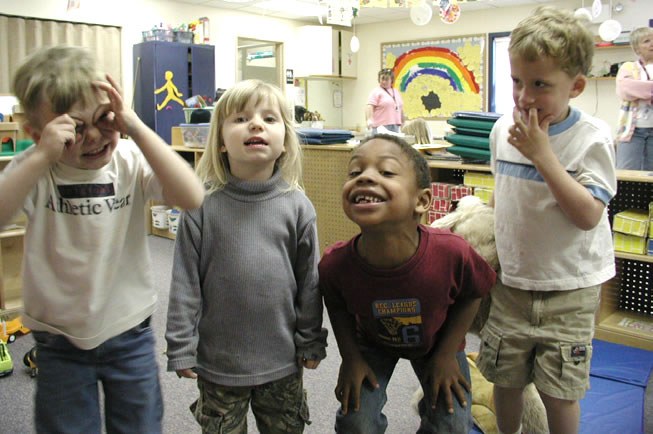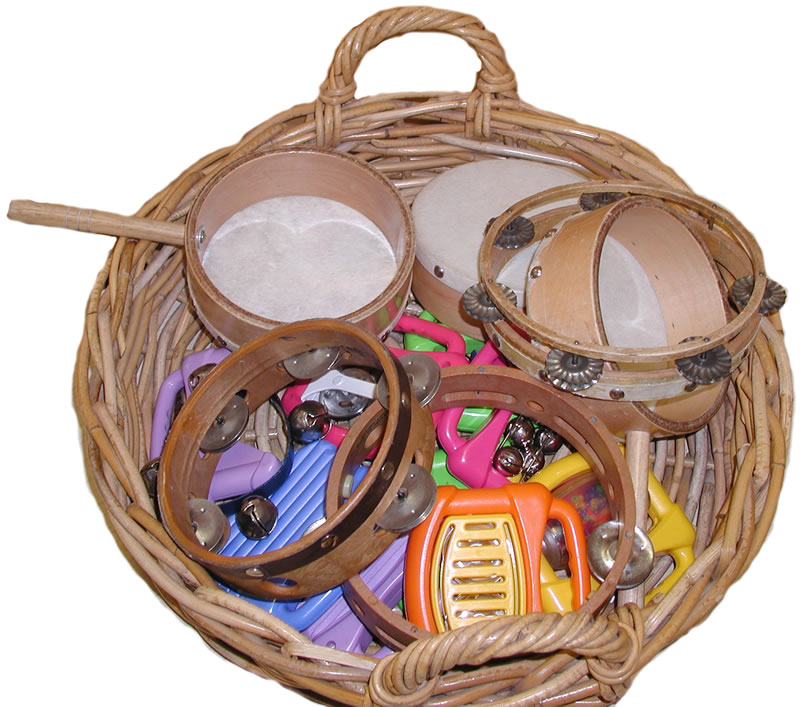Ways to include musical experiences in a child care program and ways to use music for teaching a variety of skills and concepts.

Think about the joyful music you hear every day from children
Infants are cooing sweet musical sounds, toddlers are humming and making nonsense songs all through their play, and preschoolers repeat their favorite tunes or tap out rhythms on anything that makes sound. Music is a large part of adults' lives as well. We sing lullabies to our babies, we hum while cooking, we use song to celebrate birthdays, holidays, and special events.
Take the opportunity to notice how often music enters into the child's environment: television, radio, computers, movies, performances, cars, and stores. Take time also to observe how children respond to music. As early educators, we know that music can be magical. How do we support its importance? What are quality musical experiences and how do we share this component with parents?
Time for music!
Children need time and opportunity to explore music. Time for music means more than just a twenty minute circle time. It means to provide ongoing experiences to introduce and explore multiple elements of music. Quality musical experiences do not need to be overwhelming or take tremendous preparation. Incorporate the joy of music by considering the following:
 Play a variety of music, such as classical, jazz, reggae, world music, etc., during your time with children. (Ask families to share their favorite recordings and songs.)
Play a variety of music, such as classical, jazz, reggae, world music, etc., during your time with children. (Ask families to share their favorite recordings and songs.)- Create musical instruments with free exploration of materials and ideas, as well as directions for making simple instruments (such as an oatmeal container or coffee can drum).
- Develop a music center or area where children can explore a variety of musical instruments and materials safely, such as bells, rhythm sticks, chimes, shakers, keyboards, and drums.
- Allow opportunities to record children's singing and music making through a simple tape recorder. Sending home a copied tape of the children singing their favorite songs is great fun and also shares with families the songs sung at school.
Tip: Keep the child's developmental ability in mind as well as safety. Also be sure children are aware of how to respectfully use the instruments.
Continue the magic of music
 Connect sounds in nature with music, such as a bee's buzzing sound or rain pattering on a window.
Connect sounds in nature with music, such as a bee's buzzing sound or rain pattering on a window.- Explore all the shapes in music notes, such as a circle and squiggly lines and straight lines.
- Introduce children to music in print. Copy sheet music for painting, cutting, and drawing.
- Invite families to share their musical talents or seek out community sources such as music stores, church organists, community concerts, performances, or professional and amateur musicians.
Sharing what we learn
Just as we share information with families on what we learn through play, we can also share what we learn through music. Music is a medium in which children may learn many concepts:
-
Language and literacy
New words in song, making up songs.
-
Pattern, beat, rhythm, and pitch can be explored by clapping the beat, counting the repeated verses, matching the pitch, recalling words, and developing keen listening skills. Math and thinking skills
Math and thinking skills -
Social skills
Singing children's names in song, interacting with others, sharing culture, or favorite types of music. -
Emotional skills
Learning to express self, singing about emotions, discovering how music makes you feel, supporting transitions such as a good-bye song. -
Multicultural support
Experiencing music from other cultures, other languages, and other instruments from different parts of the world. -
Physical development
Using gross motor skills to dance and move and small motor skills to grasp, hold, strum, pound.
Music is a language that children and adults from any culture can share. It's a universal component of life. Supporting the importance of music in our work with young children will bring great joy (and learning!) to all involved.
TIPS 8-3

